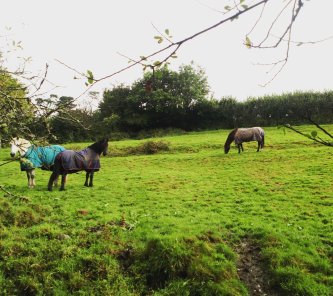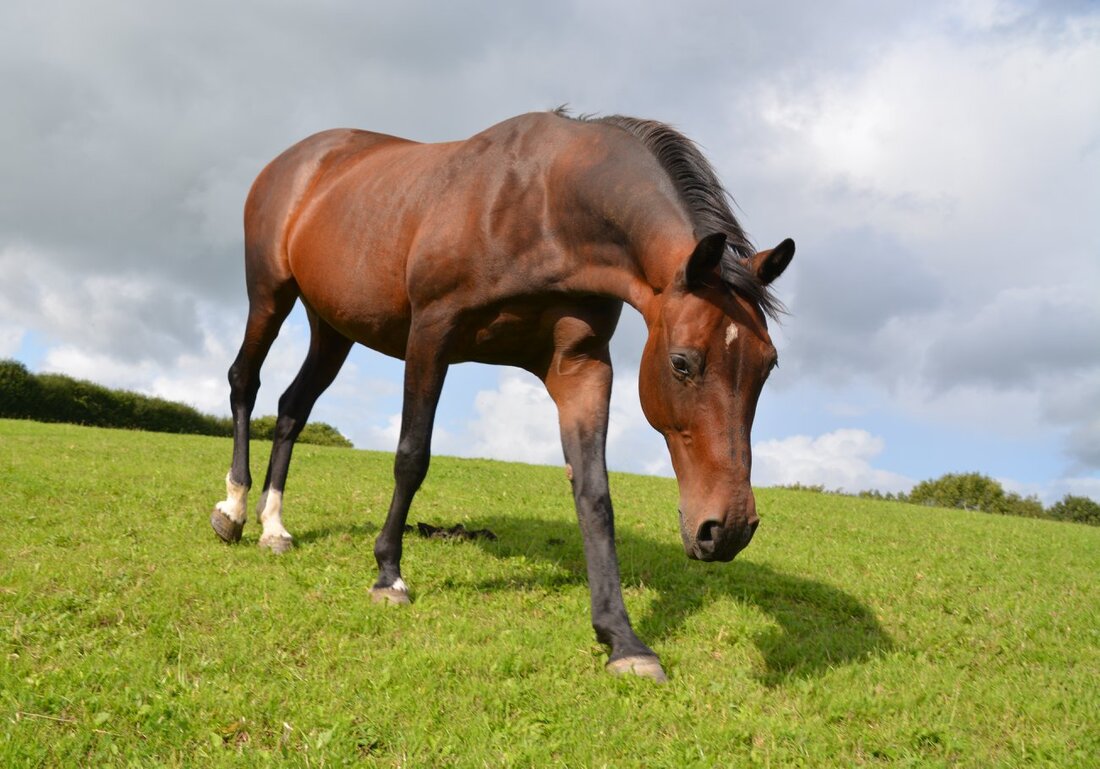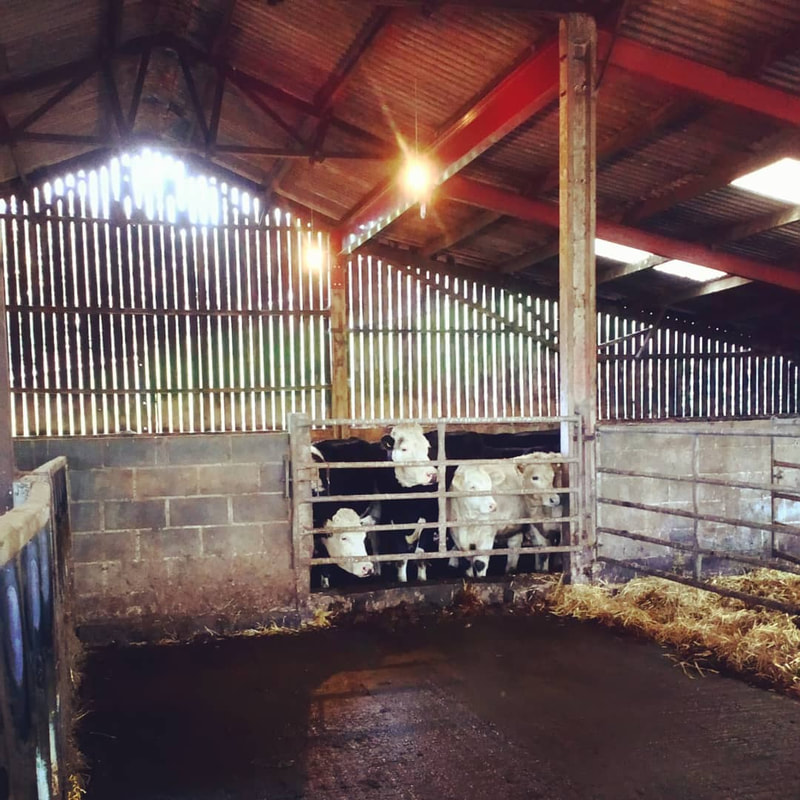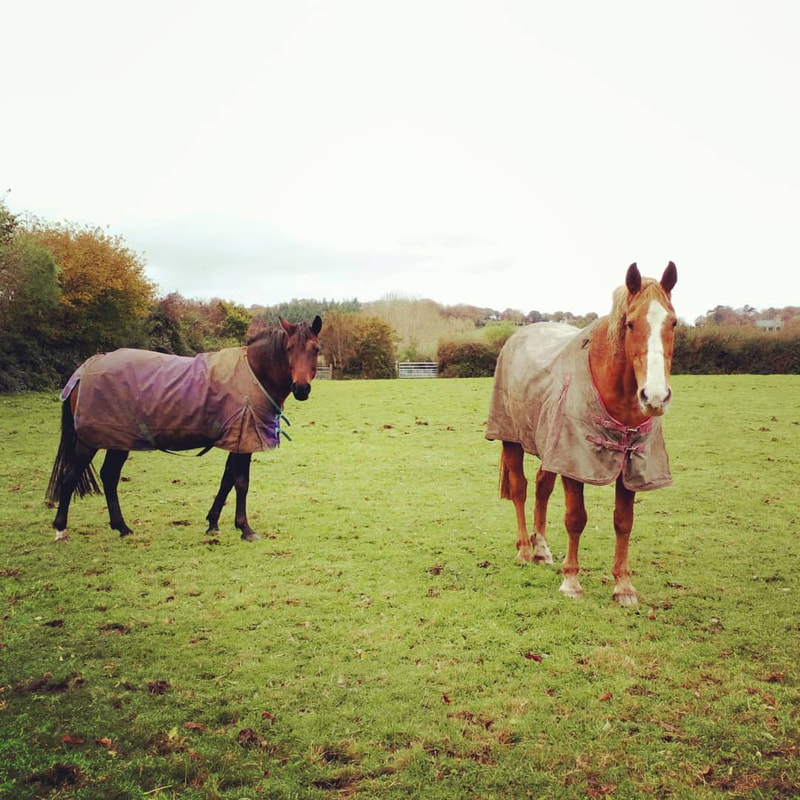|
All kids rode in a snaffle because usually that is what your parent [mother] had in their day and they had survived so you had to - D ring, eggbutt, or loose ring. If your pony was a shit and you had a kind parent or one with money, you might be allowed a kimblewick or pelham. Double bits were for adults out hunting or show ponies only.
Rubber reins were coveted - hunting a pony with shaving foam sweat on his neck meant plain reins were as useful as cooked noodles. Plaited leather reins were just as bad and ripped between your fingers. Leather girths were coveted just as much - choices were string or the white candlewick girths which would split at inappropriate moments. Coloured browbands were naff - the plastic ones for riding schools and the velvet ones for show ponies. Brass was for heavy horses. There were four types of rug - canvas NZ, jute, wool with a coloured edging and initials for best and a sweat rug that looked like something Rab C Nesbitt wore that you used when thatching. Then there were blankets, usually nasty and itchy unless you were rich and could afford a Witney blanket Every NZ rug hung to one side within five minutes of your pony being turned out. There were four types of clip - trace, blanket, hunter or full. No one asked what type of clip suited their pony, ponies were clipped to suit the level of work they were doing. No one wanted a coloured hairy, it usually meant your parents knew nothing and had bought your pony from the local riding school and no one wanted a riding school pony. Everyone plaited to go hunting. The amount of fences you jumped out hunting and stayed in the saddle was far more important than if you saw a fox. Ponies lived out in just a NZ rug, even if clipped, nothing up their necks. Feed was natural - oats, barley, wheat, sugar beet and bran then came in pony nuts which were great for rattling in the bottom of a bucket and a country mix with yummy locust beans. You made your own chop and warmed the molasses on the Rayburn. You thought you were a nutritionist if you added garlic to your pony's feed. Tesco own brand vegetable cooking oil was added to feeds to give a shine to the coat. If you went hunting, chances are your pony had a warm mash with a bottle of Guinness and a raw egg mixed into it for a pick me up. Chances are that you had the dried up remains of whatever your family had at lunchtime. Linseed was boiled and fed to everything to make the coat shine. Grooming by torchlight was a skill. Baling twine was a Godsend Your pony probably knew all the top 20 hits. Everyone entered the yearly WH Smith Win A Pony competition. If your pony went lame, the farrier was called before the vet and usually cured pony. No one's pony had ulcers. We all knew someone who knew someone whose pony had had colic but none of us actually had that pony. Fat ponies lived on thin air and no one said how cruel because there was no grass in their paddock. Boiled spud peelings and other veggie peelings were added to feeds as a treat. Wormers came in powder form - most ponies knew when it was added to their feed and left the feed uneaten and themselves unwormed. It was considered the norm to mix the wormer into a paste, spread in a jam sandwich and feed it to your pony. Bread was not considered bad for your pony or even odd to feed your pony. Winning at your local show in front of your school friends gave you rock star status until the next show. Hacking to a show was considered normal. Sometimes your parents would leave a trailer at a show with your grooming kit, picnic and a picnic for your pony because your pony would not load so you hacked anyway. ;) You turned out your pony to the best of your abilities - always plaited with clean tack. Tack was always correct, if you used a curb chain on a pelham/double then you also had a lip strap. Coloured nylon tack was laughed at and considered townie. Plain leather with just a stable rubber under your saddle or a plain numnah meant you knew your stuff - coloured numnahs, reins, etc meant you were a townie or came from a riding school. Stockholm tar was brushed into the bottom of the hoof and across the frog every night. Everyone had gone to school with purple spray stains on their fingers. When the white wound powder finally came in black, we got excited. All buckets were black and ridged until the rubber allegedly indestructible feed bowls came out - also in black. A bright yellow builder's bucket meant my pony snorted and stood as far away from it as possible and meant I had to walk to the end of the field in the hissing rain to catch him. Long leather boots were added to every Christmas list - rubber ones never shone as much. Christmas lists always consisted of things for the pony - bridle, bit, rug, etc. We didn't wear hats and back protectors hadn't been invented. We went out riding without a phone and couldn't tell anyone where we were going as chances are we didn't know ourselves, we were just going out riding. As long as we were back for meal times and before it was dark, our parents didn't worry. Ponies knew their way home if you parted company. Everyone had cleaned their tack while listening to Bohemian Rhapsody at number one in the charts. Another day of wind and rain, mud is beginning to make an appearance but the cows are enjoying their straw bed in the dry barn, and the horse's seem very content with their haylage, tons of space, company and shelter in their field.
This week we drove down to Plymouth to visit the National Aquarium.😋 🐠
A good day out for those wet days, only a short drive away from the farm. Middle photo of Harry sporting a new look this morning after exploring or hedgerows.
Horses should be able to spend time browsing hedgerows, not only is it good for them to seek out plants they need for their nutritional benefits (natural antioxidants, micronutrients etc) but also browsing helps their mental health and wellbeing too. In the wild horses spend between 16 and 18 hours a day eating forage - grasses, herbs, barks, roots and plants. Their natural diet should be low in sugar and starch and high in fibre. Our high, native hedgerows provide shelter and enrichment and include many horse friendly plants such as dogwood, blackthorn, hazel and hawthorn, nettles, rosehips, and danilons. It helps that many of our fields are 'old swards' too meaning that the fields haven't been ploughed and re-seeded for many years so they also provide a variety of different meadow grasses for a varied, healthy diet. These same fields are used for haylage and hay making for winter feeding. We like to see the horses exploring the hedgerows, but do have to occasionally tidy up their manes afterwards.  From now on is the time to combine it with your annual booster to save money to comply with the deadlines for next year The equine identification regulations make it a legal requirement for all horses in England, Wales and Scotland to be identified, meaning that the animal will have to be microchipped and passported, and will introduce penalties for those who do not comply. Owners will need to get any equine born before 30th June 2009 retrospectively microchipped, if it is not already chipped. Please see below for the deadlines for retrospective microchipping in each country. England: all equines to be microchipped by 1st October 2020. Wales: all equines to be microchipped by 12th February 2021. Scotland: all equines to be microchipped by 28th March 2021. Horse owners need to visit the new Chip Checker and input their horse’s microchip number to check the details are all up to date. If your horse’s details are incorrect, then you should notify your Passport Issuing Organisation (PIO). If your horse is deceased, you must inform your PIO to safeguard against the microchip being re-used fraudulently for a different horse. If you purchase a horse, or your horse is lost, stolen, dies or is signed out of the food chain you must let your PIO know within 30 days. The PIO will have 24 hours in which to update the Central Equine Database (CED). If your horse is imported into the UK then it must be registered with a UK PIO within 30 days of it arriving. If an owner fails to comply with the equine ID regulations, their local authority may serve a non-compliance notice which will give them a set period to comply. Depending on the severity of the offence, they may receive a fixed monetary penalty. Offences include: Failing to produce a passport when instructed. Possessing a passport but no horse. Possessing a horse with no passport or when the passport is not in your name without an agreement (preferably a written contract) between the owner and the ‘keeper’ (person responsible). Selling a horse and not handing over the passport. Transporting a horse without a passport. Owning a horse without a microchip. Owners are advised to combine microchipping with a routine vet visit, such as annual vaccinations, to minimise costs. Info from the Equine Veterinary Centre Facebook Page Returned home after a great evening with independent equine nutritionist Clare McLeod
https://equinenutritionist.co.uk/ We've booked the fabulous equine dentist Keith Evans next month for all our retirees to have their teeth checked and sorted. We've also got the vet coming to sort any sedations that may be required.
All horses over the age of three, should get their teeth looked at by a professional at least once a year whether they are ridden or retired. No excuses! Remember that any sign of poor performance, poor behaviour or weight loss could be down to a dentistry issue. When did your horse last see the equine dentist? Winter routine has begun with the cattle in the barn now for the winter. The new horses, Poppy and Jaybee are settling in nicely after they arrived yesterday, our livery yard is full but has a small waiting list.
|
WelcomeJust a little bit about all that's going on at Lowertown Farm, in the heart of Dartmoor National Park where the wild ponies roam on England's largest wilderness. Archives
September 2020
|














 RSS Feed
RSS Feed